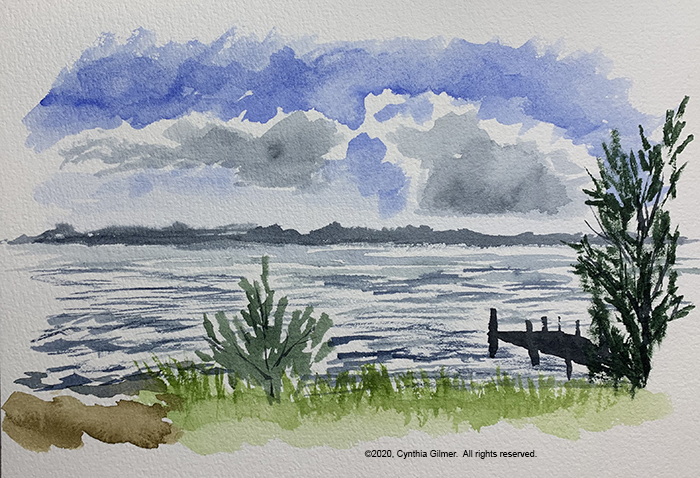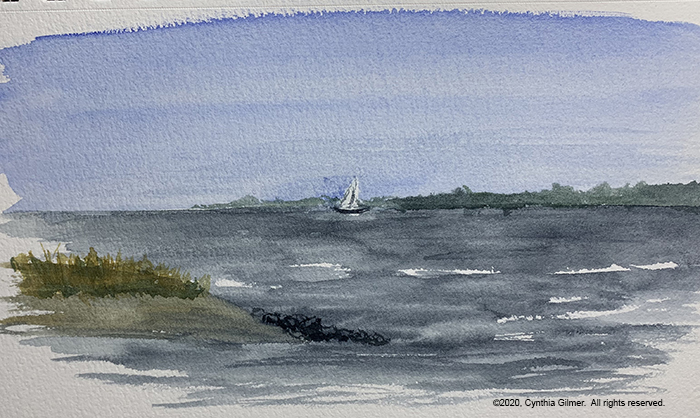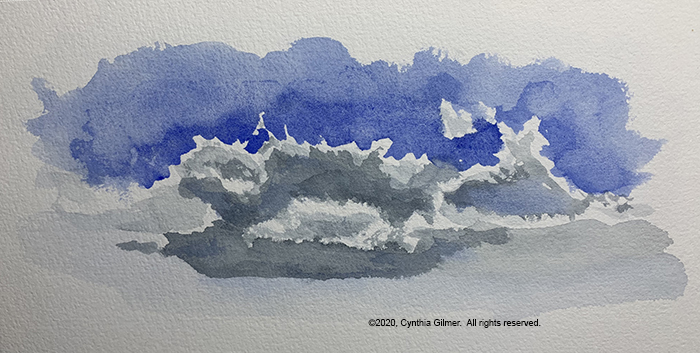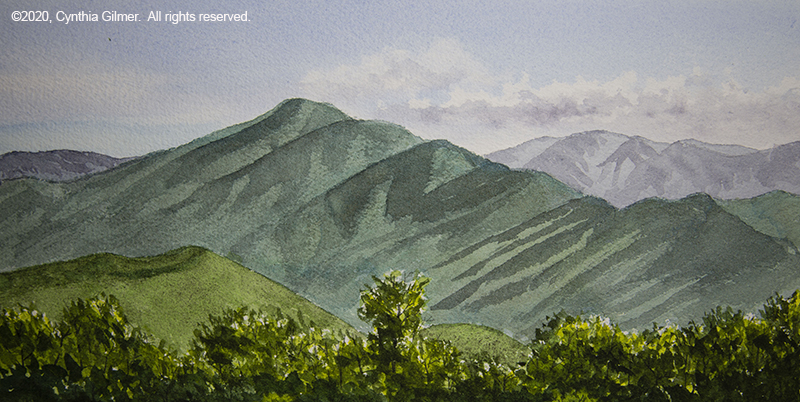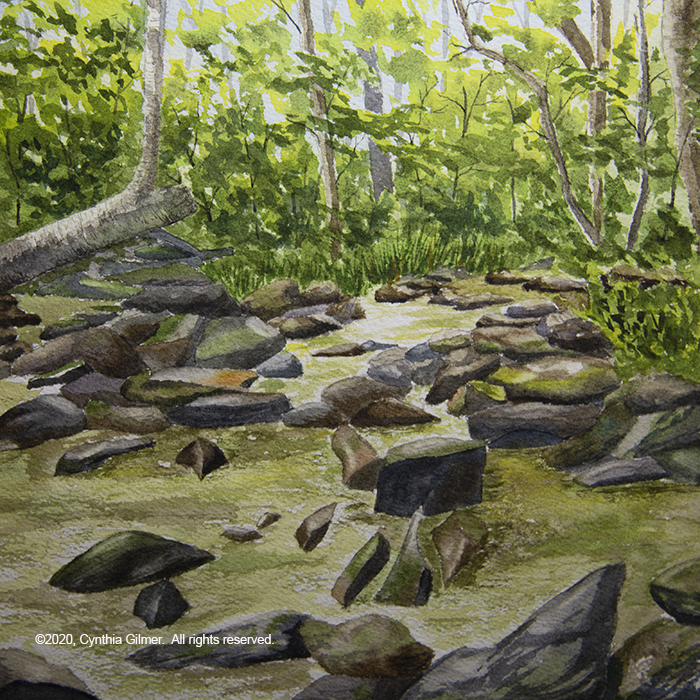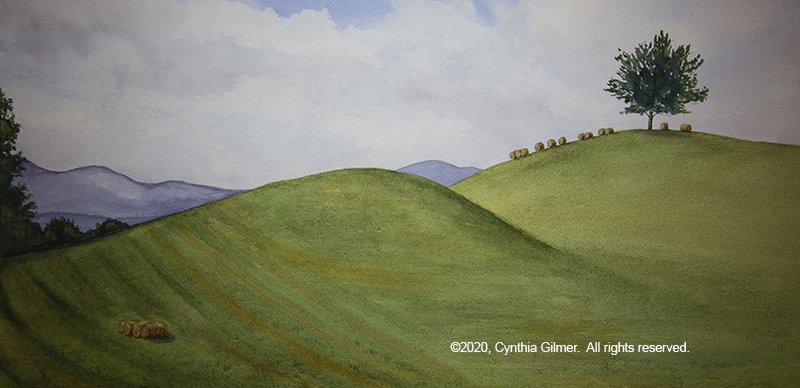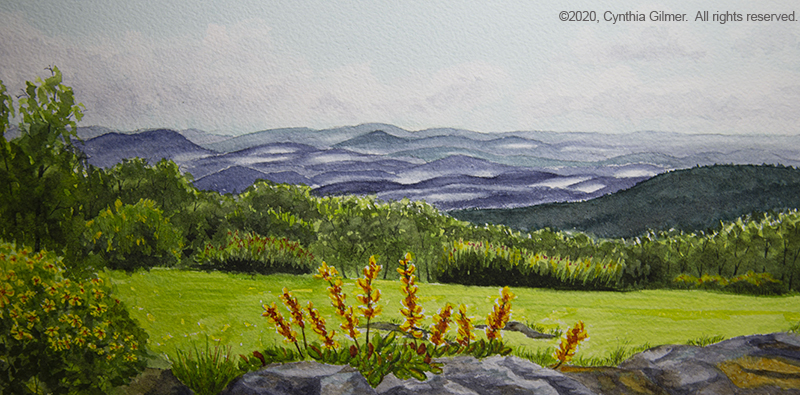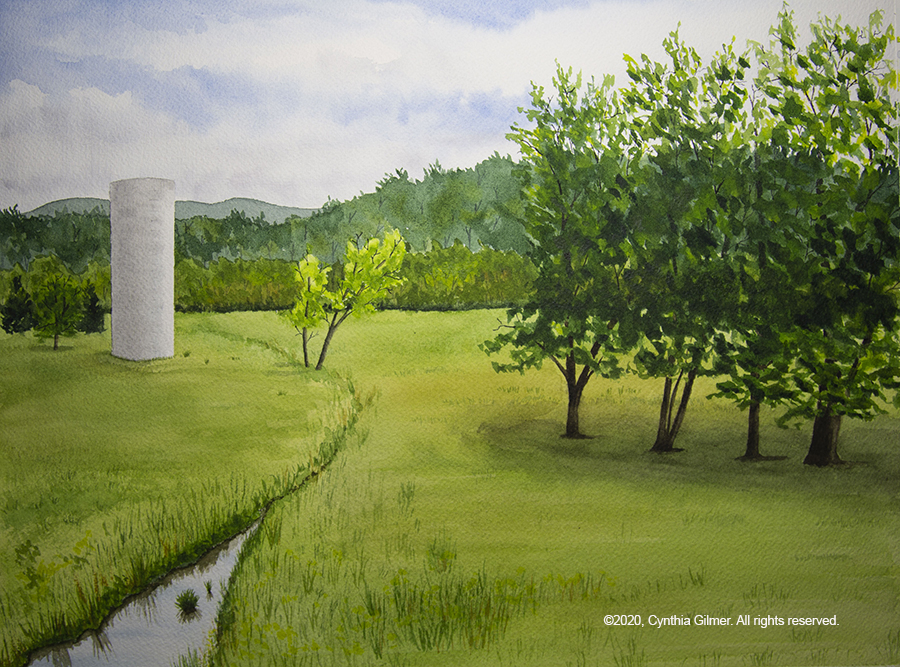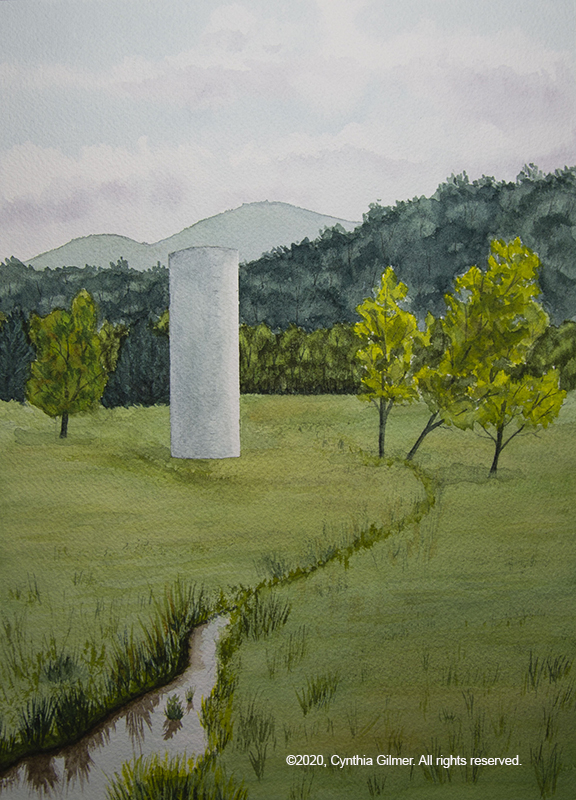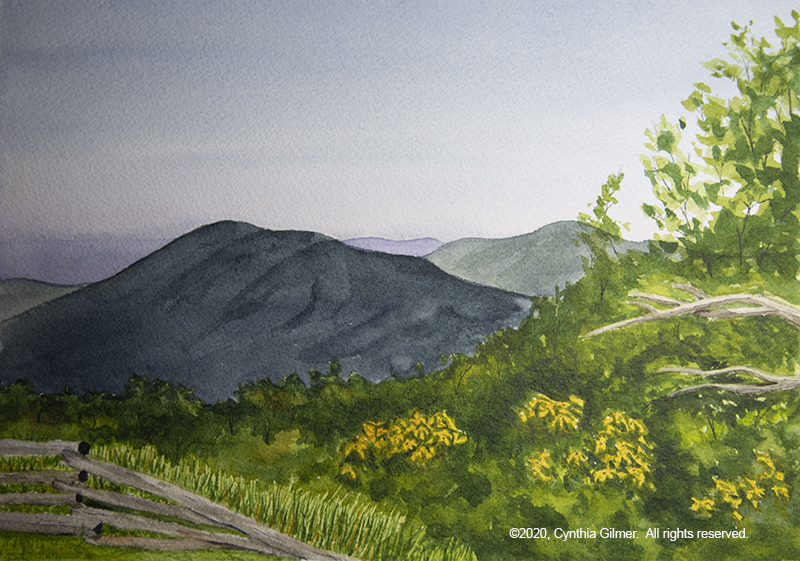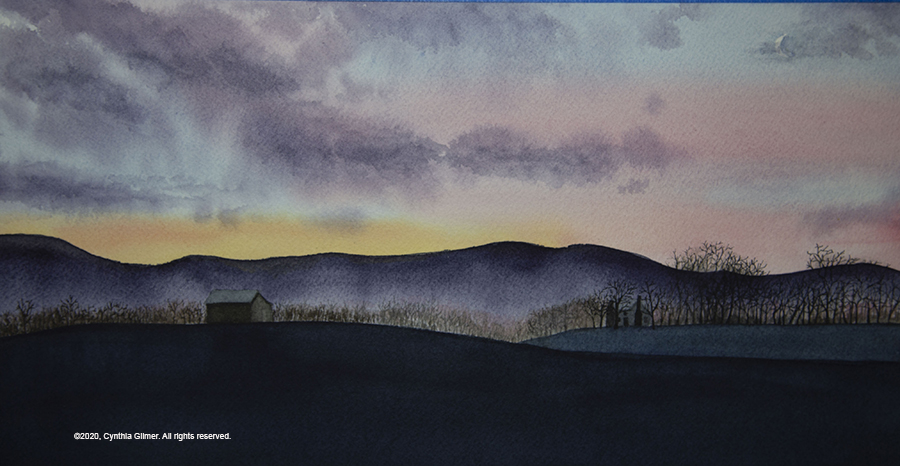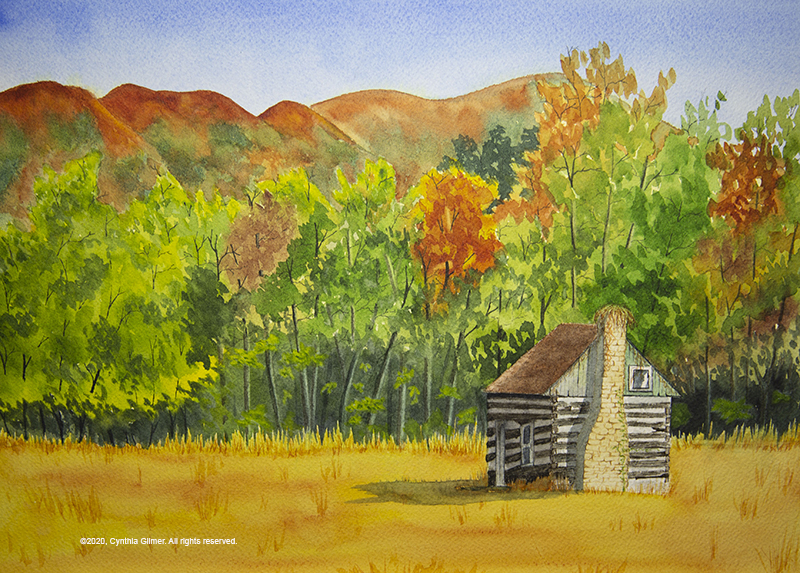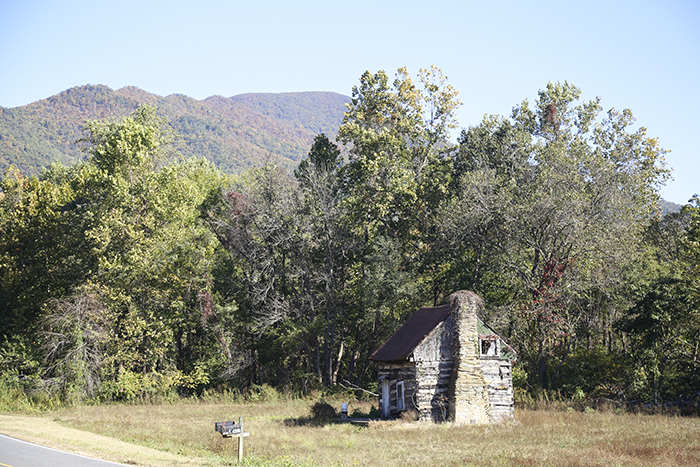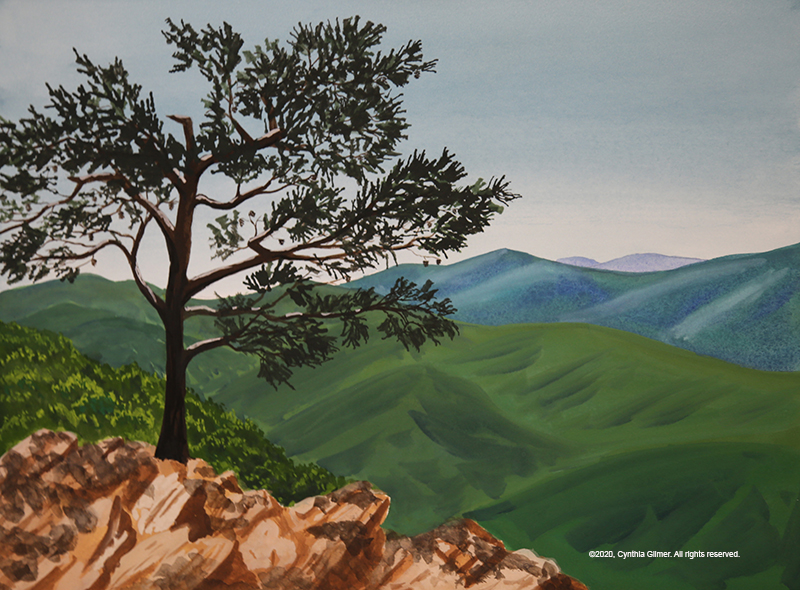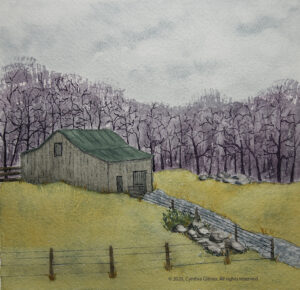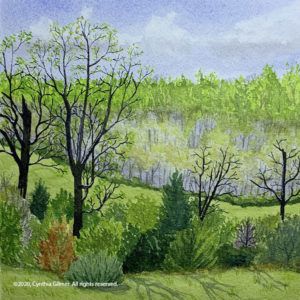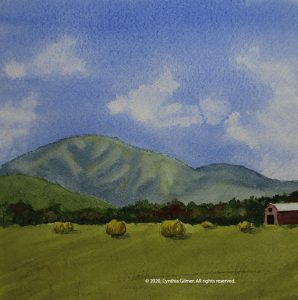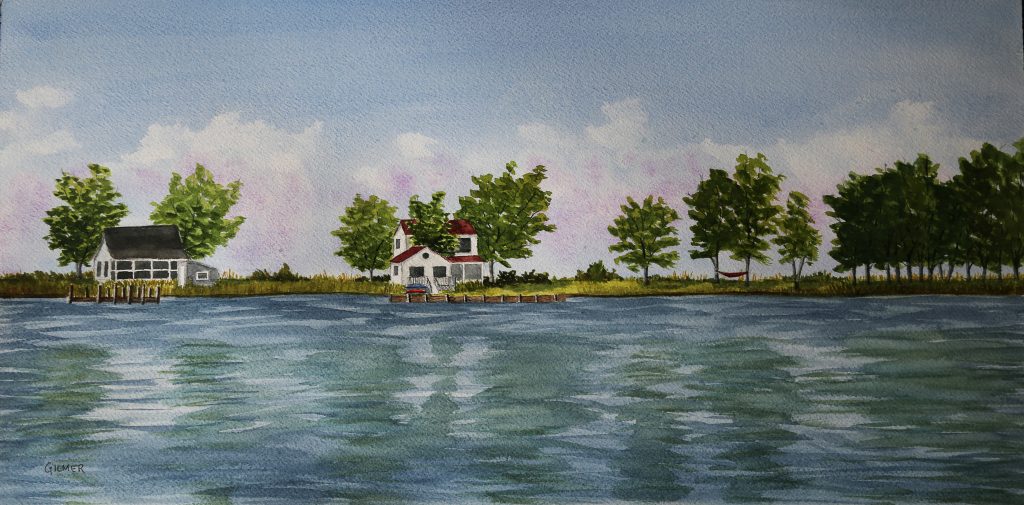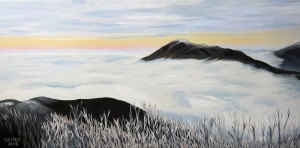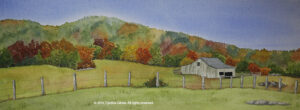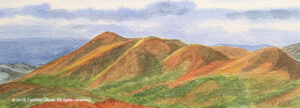So several years ago when I first started experimenting with watercolor Falls Church Arts did a 6×6 to 12×12 show where they wanted all works to be square and in that size range. I painted two 6 inch x 6 inch paintings from photos taken in Wintergreen and Italy and entered them into the show. They were accepted, which was nice, but when I look back at them now I think how far I’ve come.
I decided I wanted to reuse the frames, so I set out to paint two new 6×6 paintings. I didn’t like the first two I did so I started painting more and before I knew it I had seven 6×6 watercolor paintings. All have good and bad points, as with all paintings. I can’t decide which two to put into the frames. I thought I’d share them all and let my readers help me choose.
The first one is from a photo I took several years ago of a stream running through a field not far from where we live. The photo was taken in the early spring, and the real problem with this one is that I tried to change seasons to summer, but didn’t change the large trees in the foreground. In the photo they were just barely leafing out, so they ended up looking like dead trees. I tried to add more leaves to one of them, but the result is not the best. I still like the peaceful feel of the scene.

The second painting, which was really done simultaneously with the first, was from a photo of Three Ridges from the valley. I changed the house on the right to a barn, but not a very good one. Plus it’s too far right which hurts the composition. In my opinion, this one is just ho-hum.

After I did these first two and didn’t like them I decided to try some things that were more ambitious. Both were scenes I’d done before, but not in this form factor. I’d also been practicing some techniques that I thought were well suited to these subjects. I like these two better than the first two, but don’t let my opinions influence you. If there’s anything I’ve learned over the past few years, it’s that art is very personal. People like what they like.
One of the things I’d been practicing was rocks, trying not to over obsess with the photograph and just letting the shapes and groupings form as I painted, sort of like doodling. So I did this scene of the stream that is in our backyard. It’s fun because of the light dancing through the trees. I used white acrylic paint to make the little rapids pop.

There’s a waterfall on Route 56 in Rockbridge County that is on private property but the owners have generously let people stop to photograph and enjoy the scene. I recently heard that they had stopped allowing this because some people had been destructive, which is very sad. In this painting, I had fun with the deep shadows behind the falls and the spatter of the spray, using white gouache. It was a happy accident that I got a misty feeling along the edges of the falls and the surface of the water.

Having done those two I was on a roll, starting to have fun with the small, square form factor. I liked the fact that I could knock them out relatively quickly, so I just kept going.
There is a barn that you can see from Route 29 in Greene County that is beautiful in the morning sun with a backdrop of the Blue Ridge. I’ve never gotten a good photo of it because there’s no place to stop. All I have are a few bad cell phone photos taken from a moving car. I used one of those as the inspiration for this next painting, but I modified the scene a lot. I added the cows, the truck, and the road. I also changed the trees in the front. Unfortunately, the resulting composition isn’t the best. The barn is too much in the center, breaking the rule of thirds. I like the effect of the mountains. They represent one of those situations where the watercolor painted itself.

This next one is of Afton Mountain Vineyards. I’ve done this in oil and watercolor before, but set out to do this one quickly. I took a very different approach with the sky than my usual technique. I let the hard edges define the whites. The result is more dramatic and less subtle than my usual skies, but I like the result. I may try to use it more often.

Finally, I decided to do the cub creek barn again. I recently watched a video from my favorite online instructor, Steve Mitchell from the Mind of Watercolor, where demonstrated using a nib pen to apply watercolor to detail a painting. I used that here. I really like the technique and I’m sure I’ll continue to use it a lot.

Those are the seven I have to choose from. Let me know which two you like best.
In other news (I really need to blog more often so my posts aren’t so long), I have two paintings in shows this month. The first is one I did a couple of years ago from a photo I took on Tilghman Island. This is in the Falls Church Arts All-Member Show, which runs through March 8th.

The second is in the Shenandoah Valley Art Center’s monthly member show, which is themed “red” this month. I painted this specifically for the show. The photo is the same one used for the painting of the cub creek barn above. It was taken in the late summer, so I needed to drastically change the seasons, and the color of the barn to make it fit. I’m pleased that I’m getting better at using some artistic license to change the material I’m working from, although sometimes I’m more successful than others. This painting is on display at SVAC through March 3rd.

